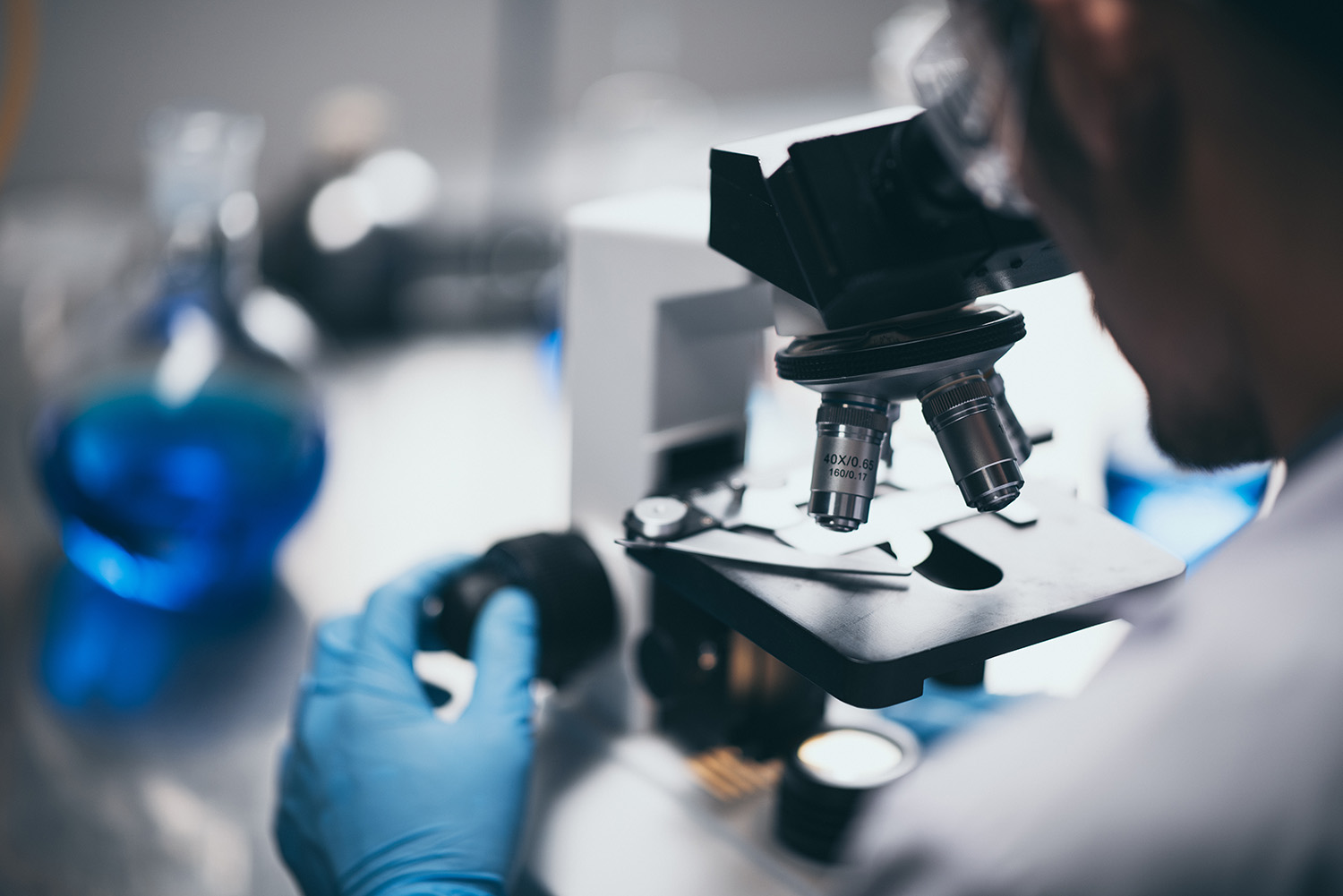The benefits of regular blood and urine tests

As vets, we have a huge range of diagnostic tools at our disposal to help us get to the bottom of what might be wrong with your pet. These range from simple and non-invasive methods such as a straight-forward physical examination, to more costly investigations like an MRI scan, or more invasive techniques like exploratory surgery. But two of the most commonly performed tests in veterinary practice, which are relatively non-invasive yet yield a vast amount of information, are blood and urine tests.
Routine blood testing
Routine blood testing involves taking a few millilitres of blood from a vein, usually the jugular vein in the neck or the cephalic vein in the front leg. The fur over the site is clipped, some surgical spirit applied and then, with the animal gently restrained, the sample is collected. To help prevent bruising, pressure will be applied afterwards, either using manual pressure for the neck, or a small bandage for the leg.
There are hundreds of different tests available, depending on what our vets are interested in testing for. In the case of routine blood testing, we tend to look at a ‘general profile’. This includes haematology, biochemistry and electrolytes.
- Haematology looks at the cells that make up the blood – red blood cells, white blood cells and platelets. Haematology can be very useful to investigate anaemia, infection, certain cancers and bleeding disorders. It can also give clues as to whether a patient is dehydrated.
- Biochemistry is all about the organs and how they function. The main parameters we measure will give us information about the liver, the kidneys and the protein levels in the blood.
- Electrolytes are the minerals that are found in the blood, including sodium, potassium, chloride and calcium. Imbalances in these values can be a sign of organ dysfunction, some hormonal conditions or dehydration.
Routine urine testing
A urine sample can be obtained in a few different ways, the most common being ‘free catch’. For dogs, this means following them around the garden with a collection pot and waiting for them to wee. For cats, there is special litter you can use in their litter tray which is non-absorbent and means you can collect the urine afterwards. Within the practice, we can also collect urine by using a catheter or by a method called where a small needle is placed directly into the bladder and the urine withdrawn into a syringe in a sterile manner. This procedure sounds quite alarming, but we find that cats tolerate it well as they generally do not feel it.
When we look at the urine sample, typically we will check the concentration of the urine, known as the urine specific gravity, the composition of the urine by using a dipstick test, and we can use our Sedivue machine to detect any particles present.
- The urine specific gravity will provide information about the hydration status of your pet and can be particularly useful in investigating the health of the kidneys.
- The dipstick has pads on it that will change colour if the urine is positive for that parameter. It will test for the presence of blood, protein and glucose, as well as ketones, bilirubin, urobilinogen and the pH level. A urinary infection might show up positive for blood with increased protein levels. Diabetes would present with glucose and maybe ketones in the urine.
How are routine tests useful?
If your pet is ill, it’s obvious why we would want to look at performing blood and urine tests to try to work out what is wrong, but there are many benefits to running regular testing as well, even when your pet appears healthy.
- Getting baseline values – for every parameter measured in blood tests, there is a reference range of ‘normal’ values within which around 95% of clinically well pets will fall. However, some individuals may naturally fall outside of these reference ranges, but if this isn’t known about before they fall ill it might be mistaken for an abnormal result.
- Monitoring trends over time – even if a result falls within the normal reference range, if testing is done regularly and we see a trend either upwards or downwards, it can help us to detect a problem at an earlier stage, before the result becomes ‘abnormal’. This is a very proactive approach which can really improve treatment outcomes.
- Finding a problem early – animals cannot tell us when they’re ill, so we have to rely on sometimes subtle symptoms. In many cases, we may see changes on a blood or urine sample before any symptoms might be recognised by an owner. This early detection can be hugely beneficial in successfully treating or managing a condition.
- Peace of mind – many times, when we run a blood sample, the results are negative for what we are testing for. Some owners that we still don’t know what is wrong. But actually, if there is nothing abnormal detected, it means we have ruled out a huge number of disease possibilities. When carrying out regular blood testing, getting results can bring peace of mind, especially in older animals.
In summary, carrying out regular blood and urine testing on your pet can help provide valuable information for the future, allow us to put preventative or management measures in place to help mediate a disease process and allow you to sleep easy at night, knowing as well as you can that your pet is in good health.



